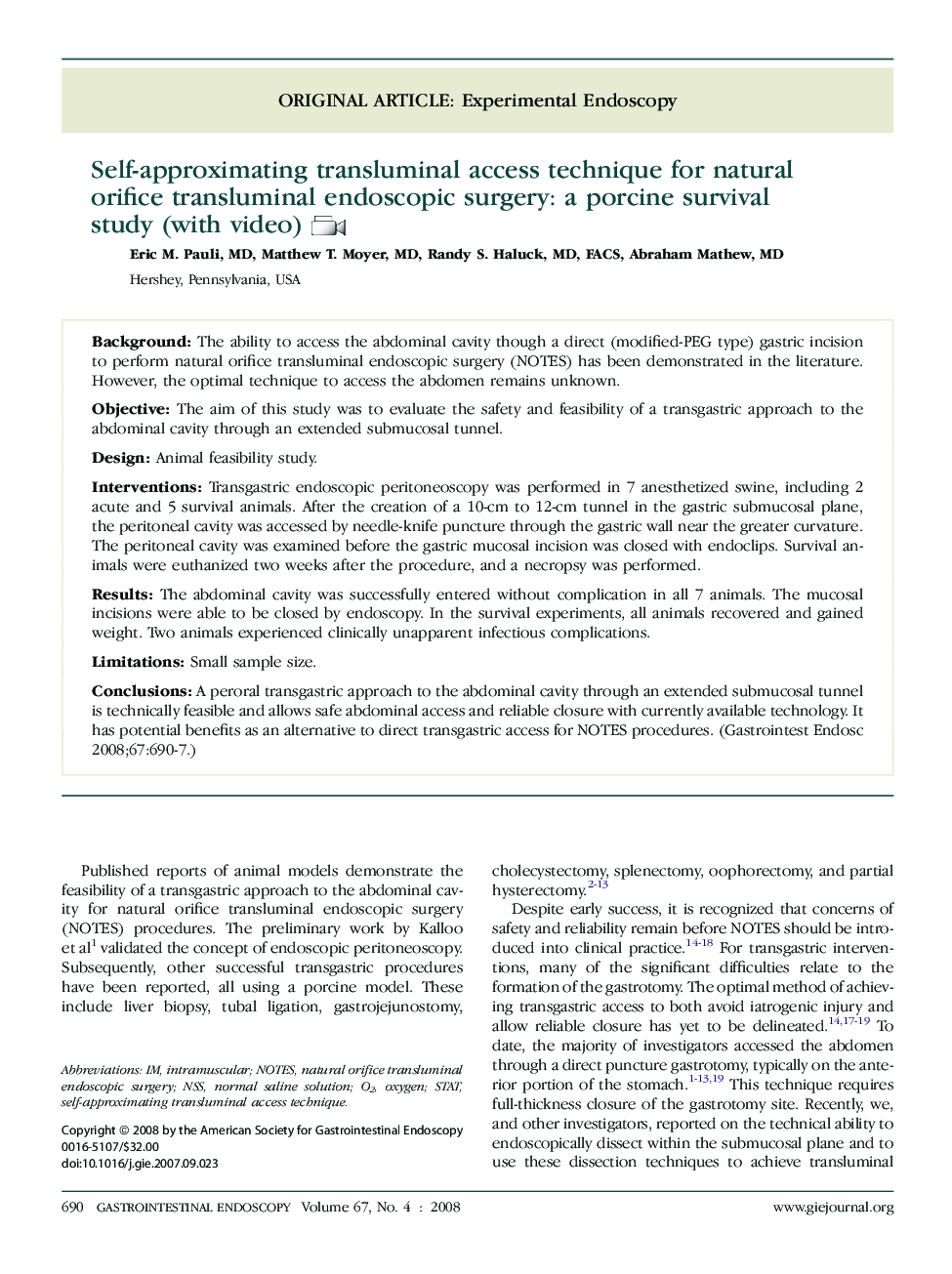| Article ID | Journal | Published Year | Pages | File Type |
|---|---|---|---|---|
| 3306725 | Gastrointestinal Endoscopy | 2008 | 8 Pages |
BackgroundThe ability to access the abdominal cavity though a direct (modified-PEG type) gastric incision to perform natural orifice transluminal endoscopic surgery (NOTES) has been demonstrated in the literature. However, the optimal technique to access the abdomen remains unknown.ObjectiveThe aim of this study was to evaluate the safety and feasibility of a transgastric approach to the abdominal cavity through an extended submucosal tunnel.DesignAnimal feasibility study.InterventionsTransgastric endoscopic peritoneoscopy was performed in 7 anesthetized swine, including 2 acute and 5 survival animals. After the creation of a 10-cm to 12-cm tunnel in the gastric submucosal plane, the peritoneal cavity was accessed by needle-knife puncture through the gastric wall near the greater curvature. The peritoneal cavity was examined before the gastric mucosal incision was closed with endoclips. Survival animals were euthanized two weeks after the procedure, and a necropsy was performed.ResultsThe abdominal cavity was successfully entered without complication in all 7 animals. The mucosal incisions were able to be closed by endoscopy. In the survival experiments, all animals recovered and gained weight. Two animals experienced clinically unapparent infectious complications.LimitationsSmall sample size.ConclusionsA peroral transgastric approach to the abdominal cavity through an extended submucosal tunnel is technically feasible and allows safe abdominal access and reliable closure with currently available technology. It has potential benefits as an alternative to direct transgastric access for NOTES procedures.
